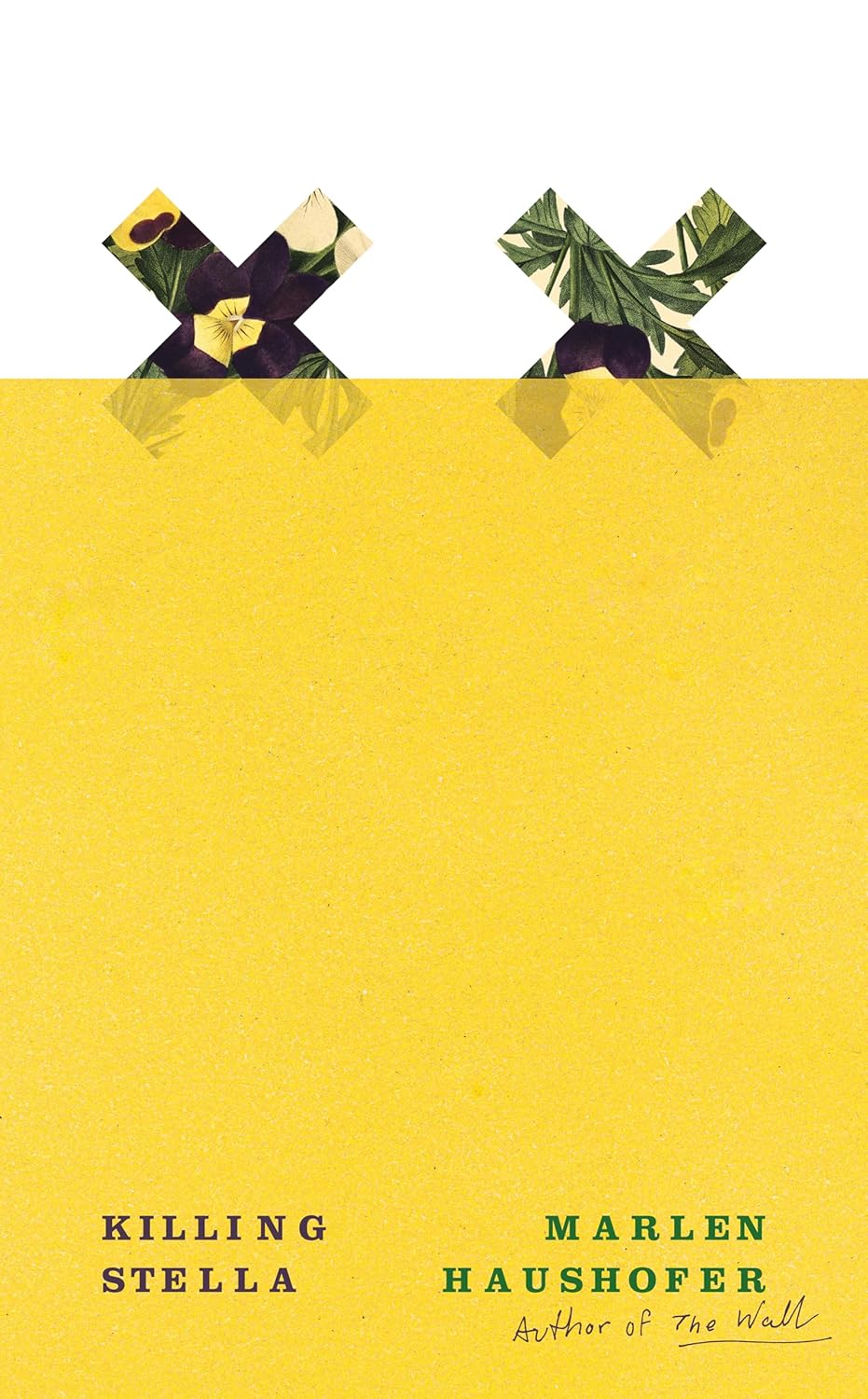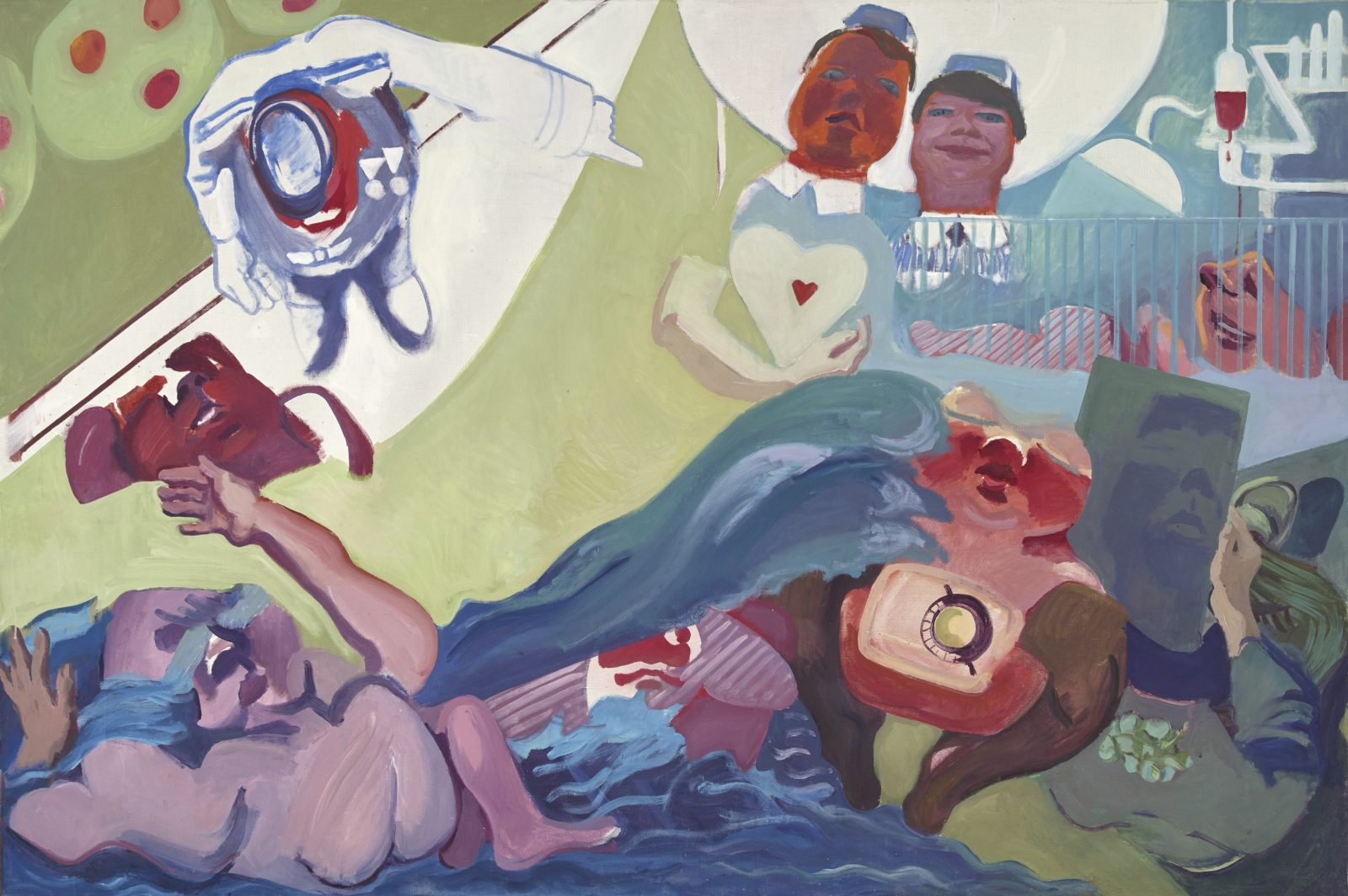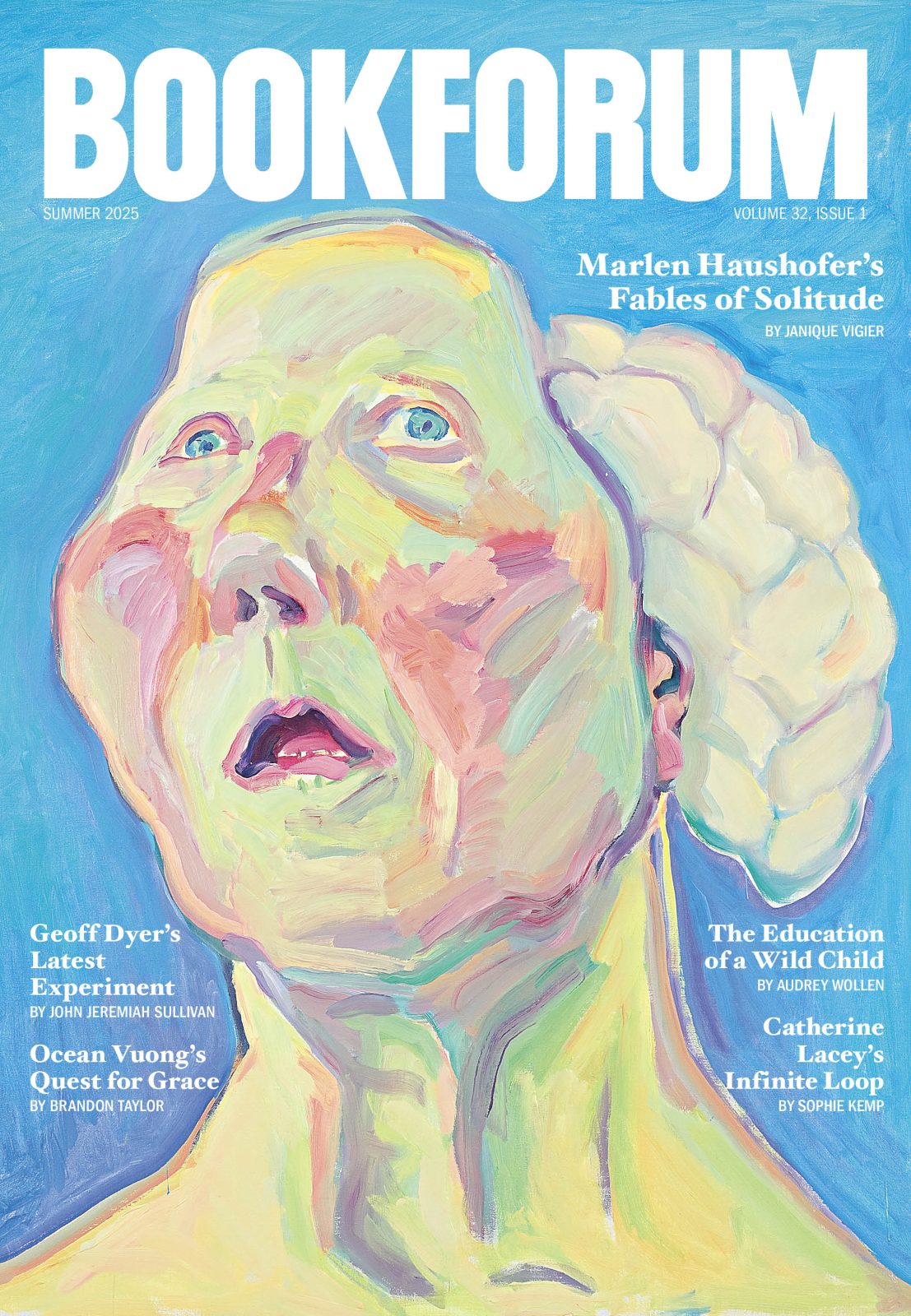
IN 1946 THE AUSTRIAN WRITER Marlen Haushofer began publishing fairy tales and short stories in newspapers and small magazines. Her prewar writings—stories, poems, chapters of novels—had all been lost, and during the war she wrote “not a single line.” The new stories were a pragmatic measure: they were written to be published, to supplement the household budget. (Her husband, a provincial dentist, frittered the family’s finances away on flashy cars.) Yet since neither he nor her sons read her works, they could also be a form of revenge. “Professionally, I feed on anger,” she wrote to a friend in 1968, two years before her death. This stifled anger takes oblique forms. Philosophical novels, thrillers, dreams: her enervating allegories are like burrs—they stick.
Haushofer never achieved the international recognition of her radical postwar contemporaries—Thomas Bernhard, Ingeborg Bachmann, Elfriede Jelinek, Peter Handke. Slightly older, preternaturally unimposing, she rarely left the country, was only tepidly recognized in her time, and worked at the margins. After the war she divided her time between Vienna and Steyr, a small town near Linz, but was an elusive figure in both. In Vienna she was a writer with a small but notable reputation; she had an intellectual life, friends, and several affairs. But she was known for her deference, for watching from a distance. In Steyr, she was a wife and mother of two, the dentist’s assistant; hardly anyone knew she was a writer. “It’s very disturbing for me to constantly live in multiple worlds,” she wrote to her friend Jeannie Ebner, but something about the split suited her nature. She cultivated a separateness from other people; it mirrored how she had long experienced the world.
Haushofer liked to say that everything she wrote was autobiographical, and her most interesting works—the disquieting Killing Stella, the cult classic The Wall, and her last published novel, The Loft—all take the form of a piece of writing by a woman who acts as a kind of proxy for the author. But for all their biographical verisimilitude, these are not self-portraits so much as studies in casting the self. Haushofer held herself up to different lights—who she had been, who she could be. She favored sly formal strategies. All three of these novels work in reverse: we know that “something” terrible has happened from the outset, but this terrible event is revealed only in the final pages. It’s the ineffability of what has happened that is the impetus for her writing––the novels are a means of working out what that something was.
She is best known for a novel in which a woman is cut off from the world: The Wall, first published in German in 1963, and reissued by New Directions in 2022, in a lucid translation by Shaun Whiteside. The woman who “writes” the novel does so in order not to “lose her reason.” Her “report,” as she calls it, is an account of the past two years of her life, living alone in the Alps. She has gone to stay with friends—an old industrialist, Hugo, and his wife, Luise—at a hunting lodge for the weekend. They have gone out for a meal in town, and the narrator has stayed behind with the couple’s hunting dog, Lynx. When they do not return the next morning, she sets out and finds her path blocked by an invisible wall, “smooth and cool.” Through the wall she can discern figures—a farmer, his wife, their cattle—stooped, frozen in place, “like something excavated from Pompeii.” She returns to the lodge and smokes three cigarettes. If the people she sees on the other side of the wall are dead, she reasons, “then all the people in the valley must be dead, and not only the people, but everything that had been alive. Only the grass in the meadows lived now, the grass and trees; the young leaves brilliant in the light.”
Survival becomes a vocation, with its ritual and order. The woman’s report is taken up with the necessary daily tasks, which become more baroque as time passes, and with her animals, who lend a purpose to her survival: Lynx, a cow and the bullock she gives birth to, a cat and several kittens. Her former life quickly strikes her as superficial, unsatisfactory. “I had achieved little that I had wanted, and everything I had achieved I had ceased to want.”
She sheds the social roles imposed upon her: femininity, no longer useful (the rings she used to wear now strike her as “absurd”); motherhood; even womanhood itself she can “simply forget.” This renunciation, hardly chosen, is initially liberating, but as the months pass, she fears that she will lose her humanity: not that she will become an animal (animals are not evil), but that she will overstep the animal altogether. “A human being can never become just an animal; he plunges beyond, into the abyss.”
Fear of the abyss compels her to begin writing the “report,” which draw on the diaries she has been keeping since the arrival of the wall. Even as it becomes increasingly unlikely that there are other survivors, the document is written in the hope that it will be read. “My heart beats faster when I imagine human eyes resting on these lines, and human hands turning the page.” The report (the managerial coolness of the word hurts) is intended as a testimony. The meta-play at hand is that fiction is capable of immersing the reader in the thoughts and feelings of another person. But something deep within her knows that this is nothing more than a fantasy—that we are immured within ourselves and cannot break through.
Asked in an interview about the meaning of The Wall, Haushofer replied: “One sits around a table and is—so many people, so many walls—far, very far apart from others.”
HAUSHOFER WAS BORN IN 1920 in Effertsbach, a small village in a mountain valley. Her father was a forester, her mother a strict Catholic and former maid with exacting standards. Marlen thought of her childhood as fabled, and its enchanted place in her mind became a kind of curse: never again would she experience such freedom and happiness. The young girl was given free rein, and spent her days absorbed in flowers, animals, and books, enthralled by her father’s stories of his wartime experience in Russia. Excursions into the fields and forests and daily farmwork shaped Haushofer, who described herself as “wild,” lively, and bright. The stately family home, which served as the template for the lodge in The Wall, would always remain an emblem of security. Her childhood idyll came to an end at the age of ten, when she was sent to the Ursuline convent school in Linz. Boarding school made quick work of mangling her spirit. A bout of tuberculosis at twelve led to months of bedrest in a sanatorium. Illness imposes a kind of existential passivity. As Haushofer said in a 1968 interview: “After my illness, a light bulb went off for me. I had learned to stop rebelling against all kinds of obstacles. Headfirst into the wall? I had given up on that.”
In 1938, the convent school was closed by the Nazis, and the following year Haushofer was enlisted in the Reich Labour Service, a compulsory program used to disseminate the National Socialist ideology, and was sent to Christburg, on the German-Polish border, to work as a farmhand. Her letters from this period describe the regimentation of camp life, the demanding physical work, but bear the stamp of pride, a fledgling sense of independence and self-determination. The same letters, to school friends, also reveal a growing sense of alienation: “You can’t imagine how different these people are from us … Closed and taciturn, yet terribly quick-tempered and violent. Christburg, a town like Kirchdorf, a bit bigger, is an hour away. You don’t see a soul on the street, the cafés are always empty, the people are stiff and extremely bourgeois. What strikes me most is the lack of taste in everything, especially the clothing; it hurts the eyes.” One day, left alone on the farm, she was attacked by a soldier. Her attitude toward men became one of deep mistrust.
With the camp evacuated after the start of the Polish offensive in September 1939, she returned home and fell into a leaden depression. At the start of the new year, she moved to Vienna, where she began her studies and took up with Gert Moth, a man she had met at the camp, and by all accounts her great love. Their relationship, intense but short-lived, ended in December 1940, for unknown reasons: Haushofer was then three months pregnant. She deemed an abortion too much to bear, but saw motherhood as a kind of death. “A woman who had a child ceased to be a free person,” she would write in her first novel, The Wallpaper Door (1957).Days before Christmas, a soldier in the air force, Manfred Haushofer, offered her a seat on the tram—the two quickly became involved. He agreed to take the child as his own, a decision he would come to resent. Marlen gave birth to a boy in Bavaria in July 1941 and left the child with a friend’s mother for the first four years of his life. She and Manfred fled Vienna for Frauenstein, where they hid out during the war, and eventually moved to Steyr, where they established a staid middle-class life. A second boy was born. But something sordid and secretive clung to the young couple. His affairs were well-known, and no one in Steyr knew that he and Marlen divorced in 1950 (they continued to live together), or that they later remarried.

Haushofer, bored, frustrated by the demands of housewifery—the “loyal mother and wife game”—looked to literary Vienna. She became close to Hermann Hakel and Hans Weigel, competing patrons of young Austrian writers; took part in literary readings and book festivals with writers like Ilse Aichinger, Bachmann, and Friederike Mayröcker; published her first book; and won some small prizes. But she felt continuously pulled back to her home life, where she wrote in stolen pockets of time: in the early mornings, between doing the housework and looking after the children.
Throughout the 1950s Haushofer watched as her peers achieved success while she felt herself barely making progress; she looked on bitterly at her husband’s relationship with her close friend Inge. “I should become independent of him,” she wrote in a 1954 letter. “I’ve been trying to do that for seven years. But because he demands all my strength and all my time, I can’t escape this slavery.” Her published work had so far been uneven, in search of a register: Killing Stella, written in 1955 and published in 1958, is where she found her voice.
The novelis a brisk tale of moral failure. Anna, a bourgeois wife, makes use of a weekend when her husband, Richard, and her daughter, Annette, have gone out of town, to put to paper what has been happening over the previous months. Anna’s oldest friend Luise, whom Anna secretly despises (“a bringer of misfortune, Luise, ugly, dried up, and boy-crazy”), asks Anna to take in her nineteen-year-old daughter, Stella, for the year. The “clumsy and earnest” girl disturbs the delicate equilibrium of the household. Anna watches with resigned horror as Richard seduces Stella, gets her pregnant, arranges for an abortion, and then deserts her. Stella kills herself: with “unreflective self-abandonment” she steps off a curb and is hit by a truck.
The first ripple of danger comes with a makeover. Anna, struck by the ease with which Stella wears her clothes—those “brown, claret and purple horrors”—has bright, pretty dresses made for her. As in a fairy tale, Stella is transformed: “beautiful,” she tells her reflection in the mirror. Anna notes Stella’s “gleaming face, that young blossoming flesh.” She arranges for Richard to take Stella to a party; that night Anna dreams of throwing stones at Cassandra, “embittered by her prophecies.” Richard and Stella attend more parties; Stella begins to “move more confidently, speak more freely.” One night she returns home from a purported evening class, with her neck “strangely mottled,” two buttons missing from her blouse. Richard returns a quarter of an hour later, buoyant, and drinks his red wine with a “secret, self-indulgent smile.” Anna feels ill; she feels nothing at all; she reaches for a sleeping pill. “I had the feeling that something horrific had come so close to my fragile glass wall that I could sense its breath and its stench.”
Springtime comes: Stella is “filled with her secret happiness,” but the affair is soon brought to an end. Richard spends less time at home, avoiding her wanting looks. One night Anna hears him speaking to Stella in a “bitterly cold and angry” tone; the next day Stella is “deathly pale.” From then on, she spends her days lying on her bed, face turned to the wall. She is “beyond help,” Anna thinks. We are left to infer that she has had an abortion. The doctor’s call comes on a Monday morning. “It was an accident,” says Richard, “an accident without question.”
Less subtle and enigmatic than Haushofer’s later work, Killing Stella is more explicit in its political allegory. While Austria and the Nazis are not named (Haushofer keeps time and place out of focus), the fascist dream of getting rid of the outsider is alive in the character of Stella, who is presented as an intruder––a “terrible bother to all of us,” a “burden,” “an obstacle that has been cleared out of the way,” “an alien element,” a “foreign body.” Her death is treated as an inevitability required to bring back the natural order. It’s the girl’s guilelessness, her innocence, that makes her guilty. “She was unable to learn the rules of the game, she couldn’t adapt and she had to perish.”
Anna has no illusions about Richard: “I used to see only guilt in Richard, and I began to hate him. But now I have known for a long time that he is not to blame if I react like this to the fact of his presence. There are many others like him, the whole world plainly knows and accepts it, and no one puts him on trial.” The link to the moral inertia of Austria after the war couldn’t be clearer. But Anna has no pity for herself, either: she knows that cowardice and convenience, ancient allies, kept her silent. Haushofer’s thin-skinned women don’t expect to be forgiven (they don’t forgive themselves). They advocate instead for willed amnesia: “Certain things you have to forget if you are to go on living,” says Anna. But she doesn’t quite believe it herself: “Stains are a strange thing in general. Never in my life have I managed to get rid of one completely. I have a deep suspicion of women who are able to remove stains. Either they’re lying or there’s something not quite right at home.”
It is precisely this inability, or refusal, to forget that governs Haushofer’s novels. The psychic dread she so skillfully renders is achieved partly through her dicey narrative strategy. In the final pages of The Wall, the narrator, having finally achieved a sense of equanimity, leaves the pasture for her daily walk and returns to find a “strange man” who bludgeons Lynx and the bull before she can shoot him down. In The Loft, the vagabond with whom the narrator—a deaf woman separated from her family—has formed an uneasy relationship, suddenly attacks her. There is the sense that a long pent-up rage is finally being loosed on its target.
Look at the many different ways I can come up with to conceive the self, her novels say. Killing Stella, the most realist and most bitter iteration, shows a woman trapped in a life without hope for change. The Wall is its idyllic counterpart: a woman escapes the social conditions that determined her life and enters into a concentrated communing with nature. Haushofer’s depiction of home life is one of performance and irreparable aloneness; her vision of utopia involves the death of the world and total isolation.
Because of the wonderful, terrible—in any case, immutable—fact that the mind is closed off to others, her works impress upon us not only the axiomatic aloneness, but also a window into the singularity of consciousness. I came to The Wall through a friend, an older gay man. “You have to read this book,” he said with unusual enthusiasm. “It’s about a woman who does everything on her own. It’s a parable.” What is the lesson, I said. There wasn’t one, exactly, but sometimes she was happy.
Janique Vigier is a writer living in London.
